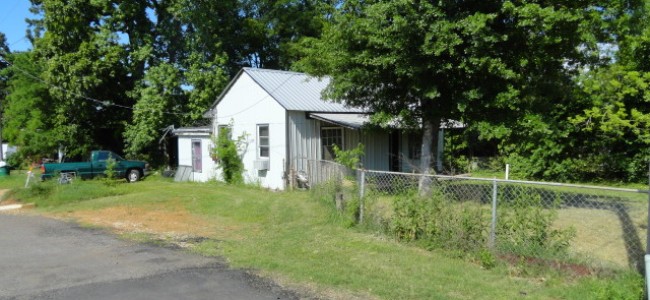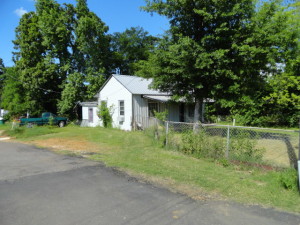VERY AFFORDABLE HOME IN HUGO OKLAHOMA
Very affordable 2 bedroom 1 bath home located on a quiet street in Hugo, OK. This would be a great rental property or starter home. Has over sized bedrooms and on a 50′ x 150′ lot. Hurry and check it out…
ABOUT HUGO:
Hugo is a city and county seat of Choctaw County, Oklahoma, United States. It is located in southeastern Oklahoma about 9 miles (14 km) north of the Texas border. As of the 2010 census, the city population was 5,310.[3]
The city was founded in 1901 and named for the French novelist Victor Hugo.[4] The city serves as winter quarters for some circus performers. It is adjacent to one of the oldest schools west of the Mississippi: Goodland Academy, begun in 1848.
The town is located in a cultural area of the state known as Little Dixie, as it was settled by Native American tribes, African Americans and European Americans from the southeastern United States. It is near the tourist area of Kiamichi Country. Source: https://en.wikipedia.org/wiki/Hugo,_Oklahoma
Historical Info:
Hugo is the county seat of Choctaw County, located in deep Southeast Oklahoma, approximately 60 miles from the Arkansas and Louisiana borders, and 25 miles north of Paris, Texas.
A part of Indian Territory until statehood in 1907, Hugo was first explored by other than Native Americans when Bernard de la Harpe, explored for the glory of France in 1718. Unlike Western Oklahoma’s flat, red and dry lands, Choctaw and surrounding counties abound with beautiful wilderness rivers and streams and numerous lakes. The area is often billed as a “Sportsman’s Paradise” because of plentiful game and fishing opportunities in, and surrounding Hugo and Choctaw County. Much of this outdoor paradise lies in and around the Kiamichi (Ki-A-Mee-Chee) Mountains and the Kiamichi River, from which the Hugo Lake is formed. Though once believed to be an Indian word, the word ‘Kiamichi’ was introduced by early French explorers, who found the area abounding with wild game, and also a very large and outspoken woodpecker. They named the bird and the area ‘Kiamichi’ –their word for “raucous bird.”
In the 1800s The Treaty of Dancing Rabbit Creek required the removal of many Choctaw Indians from Mississippi to the Oklahoma Indian Territory. In these early settlement days, supplies were brought into Fort Towson 15 miles east of Hugo. Fort Towson, built in 1824 along with Ft. Gibson in anticipation of the coming of the Five Civilized Tribes, became a hub trading village. Supplies were brought up the Red River from the Mississippi on steamboats going to Denison, Texas. Stops were made at Pine Bluff Ferry on the way upriver and Folson’s Gin on the down-river return trip. Later, the St. Louis-San Francisco “Frisco” Railway was completed in 1887, providing rail freight and passenger service from Monette, Missouri to Paris, Texas.
Today Fort Towson gains in historical significance as History buffs discover that it was there that the very last treaty ending the Civil War was signed By Brigadier General Stand Watie, the last Confederate general officer to surrender and lay down his arms on June 23, 1865.
In 1902 the Frisco built an East-West line from Hope, Arkansas, to Ardmore, Oklahoma, creating the territorial town later named Hugo. Almost overnight with the completion of these two strategic rail lines, tents and Conestogas converged on the new territory. A local rail depot was the center of attention with trains coming and going all day long. The Harvey House Restaurant in the Depot grew in popularity. There were dance hall girls, hustlers and gunfighters. The city of Hugo was named by the wife of a local surveyor, W.H. Darrough. Mrs. Darrough was a fan of French Novelist, Victor Hugo and she recommended the name “Hugo.”
The oldest continuously operated Christian children’s home in America (Goodland Presbyterian Children’s Home), is located two miles south of Hugo. Operated by the Presbyterian Church, the home continues to enrich the lives of young men who are residents of the school. As the railroad grew, so did Hugo. Into the 20s and the 30s, the city continued to grow. As cotton yields diminished and highways improved, railroads faltered as a primary mode of travel, and Hugo was forced to seek other means of growth and development. Source:http://www.hugo2choctawcountyok.com/






 Southeast Oklahoma Real Estate at its BEST. Located in Choctaw County Oklahoma...
Southeast Oklahoma Real Estate at its BEST. Located in Choctaw County Oklahoma...